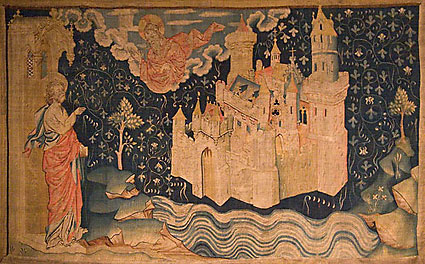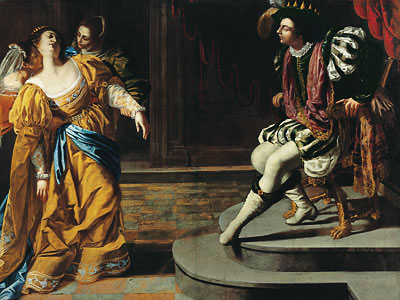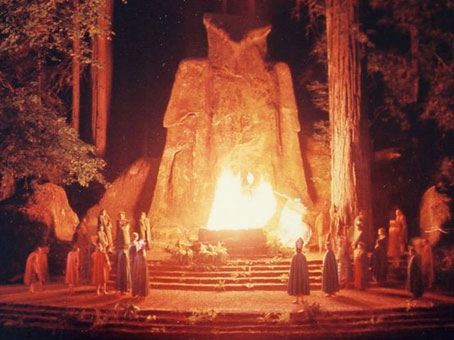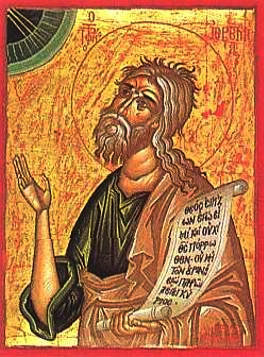Apr
8
2009
“…and I came to Jerusalem and discovered the evil that Eliashib had done for Tobiah, in preparing a room for him in the courts of the house of God. And it grieved me bitterly; therefore I threw all the household goods of Tobiah out of the room. Then I commanded them to cleanse the rooms; and I brought back into them the articles of the house of God, with the grain offering and the frankincense.” Nehemiah 13:7-9
After the failure of Israel’s kings and their adulterous priesthood, God established new worship in the “wilderness” of Babylon under Daniel and Ezekiel. When Babylon fell, He brought His new Jerusalem, like a pure bride, back to the mountain of God.
Continue reading
Comments Off | tags: Apostasy, Compromise, Daniel, Ezekiel, Ezra, Man of sin, Nehemiah, Priesthood | posted in The Restoration Era
Apr
8
2009

The Restoration Era is the least understood period of Bible history. But without understanding the foundations laid during this time, we misinterpret the ‘apocalyptic’ passages in the New Testament. We won’t understand John’s new Jerusalem if we think Nehemiah’s is just about restoring a broken community.
Comments Off | tags: Apocalyptic, Nehemiah | posted in The Restoration Era
Apr
8
2009

Esther before Ahasuerus, 1628–35. Artemisia Gentileschi (Italian [Roman], 1593–1651/53).
The repeated structures in the Bible allow us to fill in some of the gaps. Although it can’t be proved from Genesis 1-3 that Adam and Eve would have been given robes if they had obeyed, the event is repeated many times throughout the Bible and there are robes of office for the obedient.1
Similarly, the event is repeated in the book of Esther. Without a Jewish king, the role of the restored Israel was that of a priesthood of all Jews within the “Tabernacle” of the empire. So Mordecai’s failure, in advising Esther to hide her identity, epitomises the failure of Israel even at this early stage in this era.
Enter the snake, Haman. Continue reading
Comments Off | tags: Compromise, Esther, Greater Eve, Mordecai, Revelation | posted in The Restoration Era
Apr
8
2009
 They sent therefore fifty men. And for three days they sought [Elijah] but did not find him. And they came back to [Elisha] while he was staying at Jericho, and he said to them, “Did I not say to you, ‘Do not go’?” (2 Kings 2:17-18)
They sent therefore fifty men. And for three days they sought [Elijah] but did not find him. And they came back to [Elisha] while he was staying at Jericho, and he said to them, “Did I not say to you, ‘Do not go’?” (2 Kings 2:17-18)
It seems the Ark was “taken” like Enoch. If it was carried to Babylon, perhaps it was melted down with other conquered “gods” to contribute to Nebuchadnezzar’s “golden calf.” It fits the pattern if the Ark “died” on the altar of false worship “outside the city.” Continue reading
Comments Off | tags: Ark of the Covenant, Babylon, Daniel, Elijah, Elisha, Enoch, Jericho, Jezebel, Lampstand, Michael O'Brien, Nebuchadnezzar, Revelation, Zechariah | posted in Biblical Theology, The Restoration Era, Totus Christus
Apr
8
2009
 During the Creation week, there were three days of forming new “empty spaces” by dividing the original watery deep (the Abyss), then three days of filling them. A ‘world model’ develops with God’s throne at the top and the Abyss at the bottom, the place furthest from the throne. The architecture of the Tabernacle follows this model, laid out upon the ground.
During the Creation week, there were three days of forming new “empty spaces” by dividing the original watery deep (the Abyss), then three days of filling them. A ‘world model’ develops with God’s throne at the top and the Abyss at the bottom, the place furthest from the throne. The architecture of the Tabernacle follows this model, laid out upon the ground.
When the priesthood – the Land-mediators – disobeyed God, the Abyss was dredged up to cover the Land (holy place). We see this first in the flood, and later in the invasions of Assyria, Babylon and Rome.
The Valley of Hinnom became a symbol of the ‘Abyss’ below the true mountain of God. As an evil twin of the holy place, it was an ‘Adamic’ clay pit with no glorious metal. It was also the place where Judah sacrificed their infants to false gods. It was counterfeit worship in the tabernacle of hell, and the Lord said He would fill it with their bodies. Their dark ‘table of showbread’ became a snare. [Read Jeremiah 19]
After the Babylonian captivity, Zechariah saw the church in “the deep” (often translated valley or glen). A new Land-altar was rising out of the ‘waters’ – a new mountain of God, with a new Eden-temple to mediate for the world.
TAOTA
Comments Off | tags: Altar of the Abyss, Babylon, Creation Week, Exile, Gehenna, Jeremiah, Priesthood, Tabernacle, Table of Showbread, The flood, Zechariah | posted in Biblical Theology, The Restoration Era
Apr
8
2009
“…though Jews returned to the land after the decree of Cyrus, they did not enjoy the fruits of it (Haggai 1:1-11). They were still alienated from the land. They did not really occupy it until they rebuilt the Temple, which was completed in the sixth year of Darius, 20 years later.”1
Darius listened to those who opposed the Jews and ordered the Temple reconstruction to officially cease, so the Lord raised up two witnesses, Haggai and Zechariah. Haggai would chastise the people for neglecting the house of God, and stir up their hearts to finish it. Zechariah would deal with the spiritual war going on behind the scenes.
Zechariah’s visions perform the same function as Abram’s animal sacrifice. (In Abram’s time, there was a famine in the Land, and later it did not support Abram and Lot’s flocks). In Zechariah, the mediator who is “passed over” is not Abram but Joshua the High Priest. The sins are atoned for again, but not with animal sacrifices. In Zechariah it is the Angel of the Lord who steps in, chases away the accusations of Satan (as the ravens), and provides clean robes as a New Covenant.
Then the Temple could be completed, and the abundant fruits of a recreated Land were enjoyed by a new Israel.
________
1 James B. Jordan, Jubilee,
Biblical Chronology Vol. 5, No. 4, www.biblicalhorizons.com
Comments Off | tags: Abraham, Atonement, Covenant curse, Cyrus, Darius, Famine, Haggai, High Priest, James Jordan, Lot, Temple, Two witnesses, Zechariah | posted in The Restoration Era
Apr
8
2009
or Understanding the Restoration Era
Peter Leithart writes:
NT Wright has long argued that first-century Jews considered themselves to be in a continuing exile. The canon of the Hebrew Bible suggests as much.
If we take our arrangement (the LXX arrangement), the Hebrew Bible ends with Malachi, who certainly doesn’t see a gloriously restored Israel when he looks around him.
If we take the MT arrangement, the Hebrew Bible ends with the decree of Cyrus; it’s as if the return has never happened.
Either way, the canonical arrangement supports Wright’s contention.1
 I had a long debate with my friend Matt who holds Wright’s view. I see the point. But regardless of the arrangement of the canon, what does the Bible teach?
I had a long debate with my friend Matt who holds Wright’s view. I see the point. But regardless of the arrangement of the canon, what does the Bible teach?
I subscribe to Jordan’s view that the exile/restoration prophecies actually concern the exile/restoration. When Jeremiah predicted a New Covenant with Israel and Judah, it was the one ratified at the beginning of Zechariah. It came to pass, no bull. Those who apply the prophecies of restoration directly to the first century get it wrong.2
The Jews may have thought they were still in captivity. But they also thought the second Temple was less glorious than Solomon’s. Ezekiel’s Temple was a vision of an empire-wide temple made of people, synagogues spread throughout the empire. It was a picture of a restored Israel’s greater spiritual influence, in the same way that Revelation’s new Jerusalem is a picture of the church.
Like many Christians today, they were impatient for the Messiah to come and “wash behind their ears”, fix all their problems, when He had commanded them to conquer the world with their witness. The exile was long over, and atoned for as well. The Jews failed to understand the times they lived in, and so do we in many cases. Like Israel in Ezekiel 37, the first century church was an Israel resurrected for warfare.
_______
1 Peter J. Leithart, Continuing Exile and Canon.
2 Doug Wilson’s excellent new commentary on Hebrews, Christ and His Rivals, still does this from what I have read so far. To be sure, the apostles quoted the prophets because they prefigured the first century, but the details of the prophecies anchor them in previous history.
Comments Off | tags: Doug Wilson, Exile, Ezekiel's Temple, James Jordan, Jeremiah, N. T. Wright, Peter Leithart, Revelation | posted in The Restoration Era






























